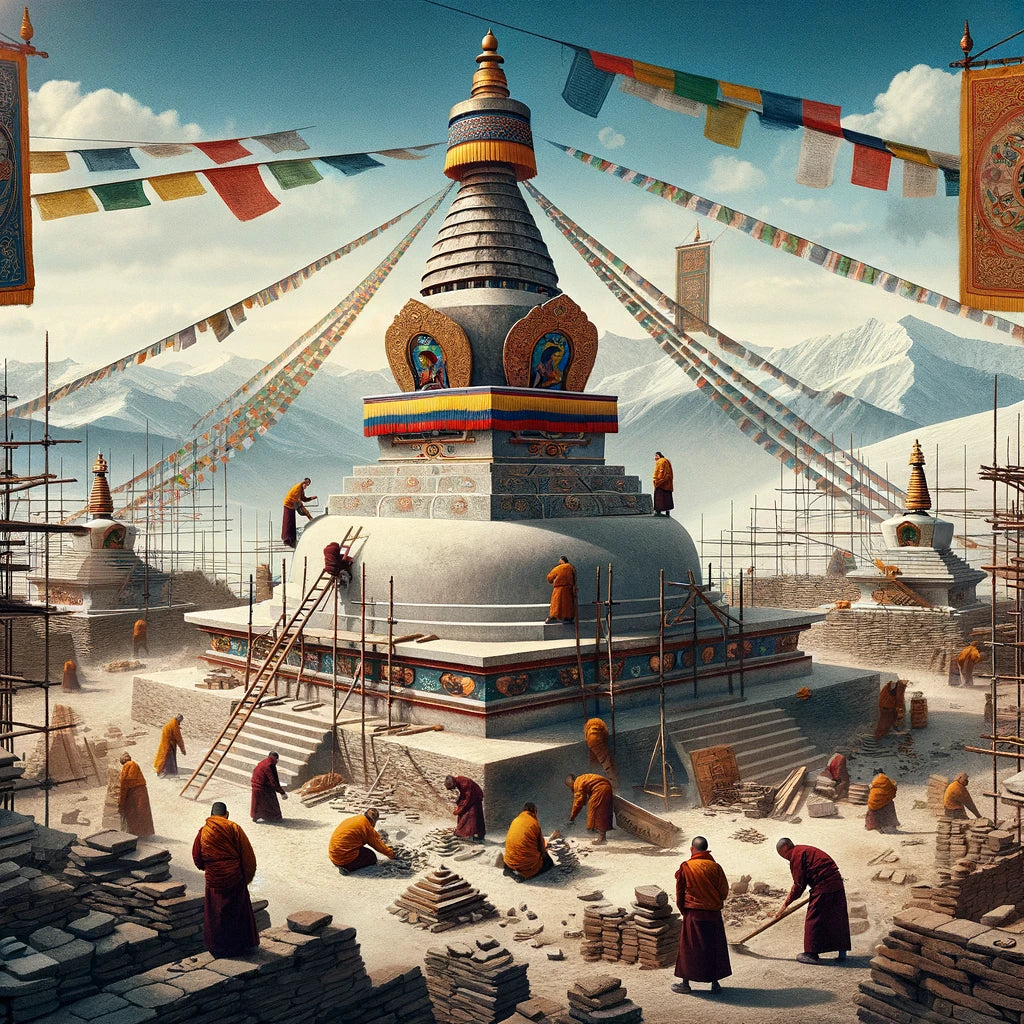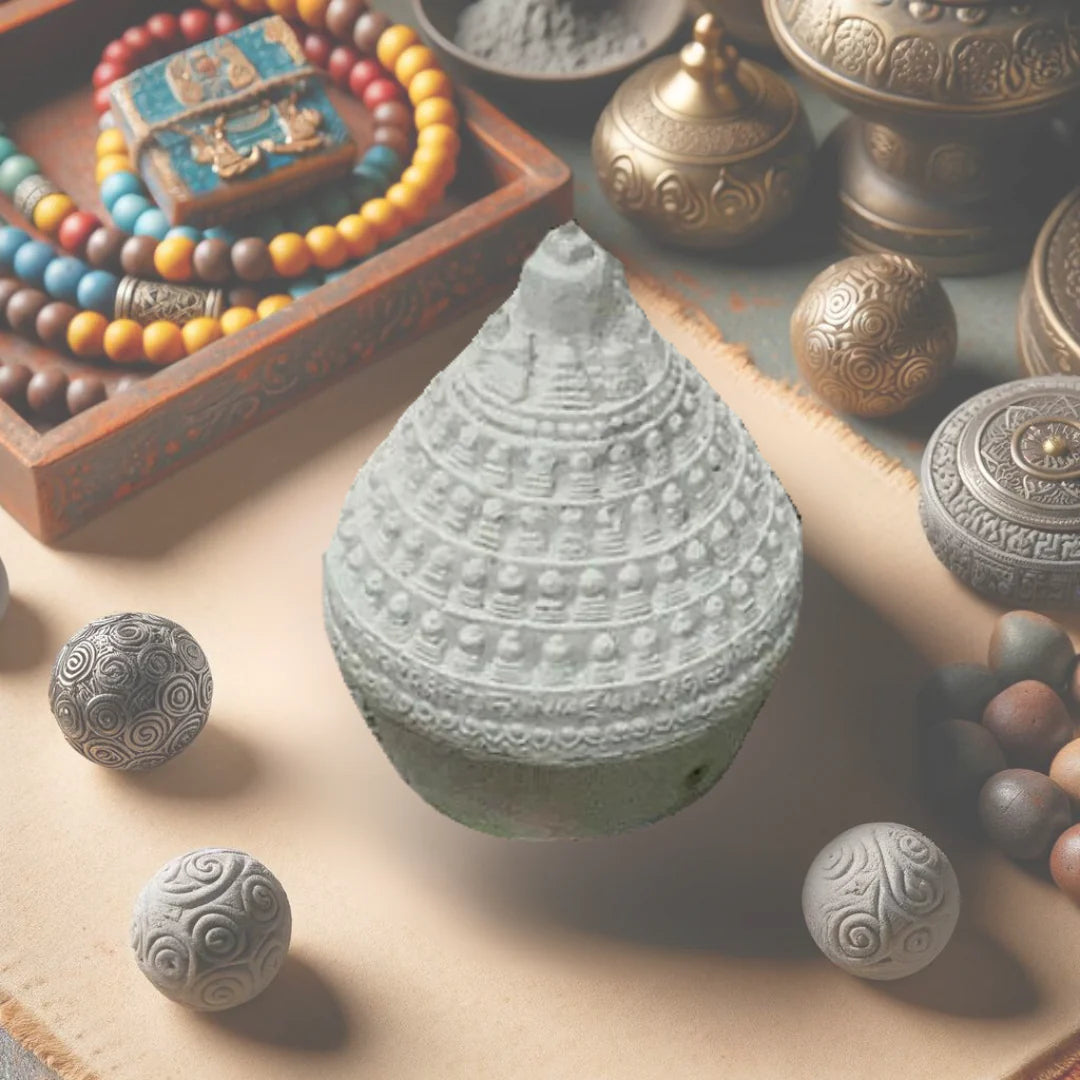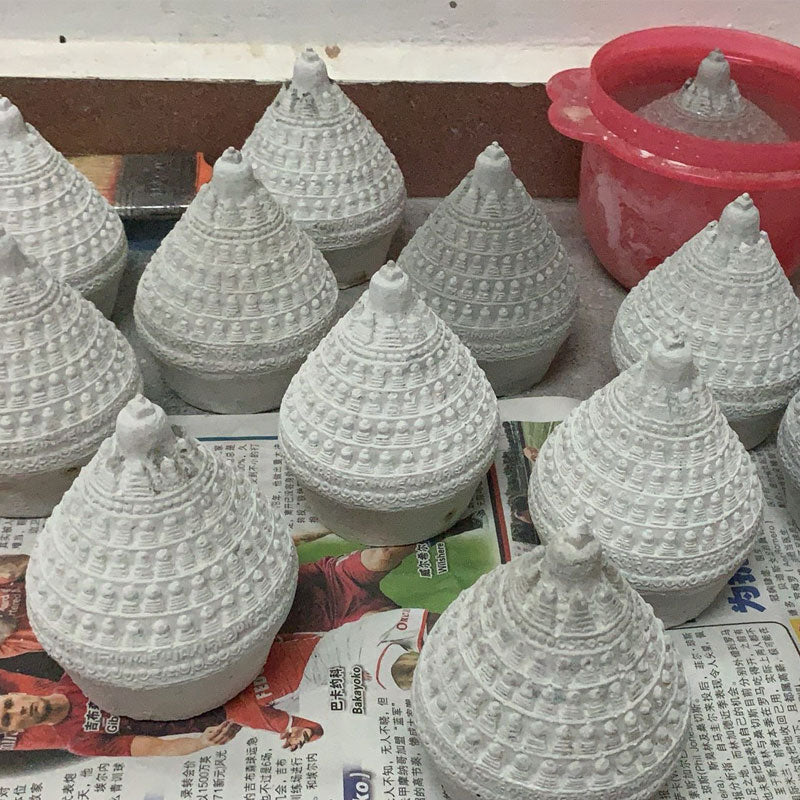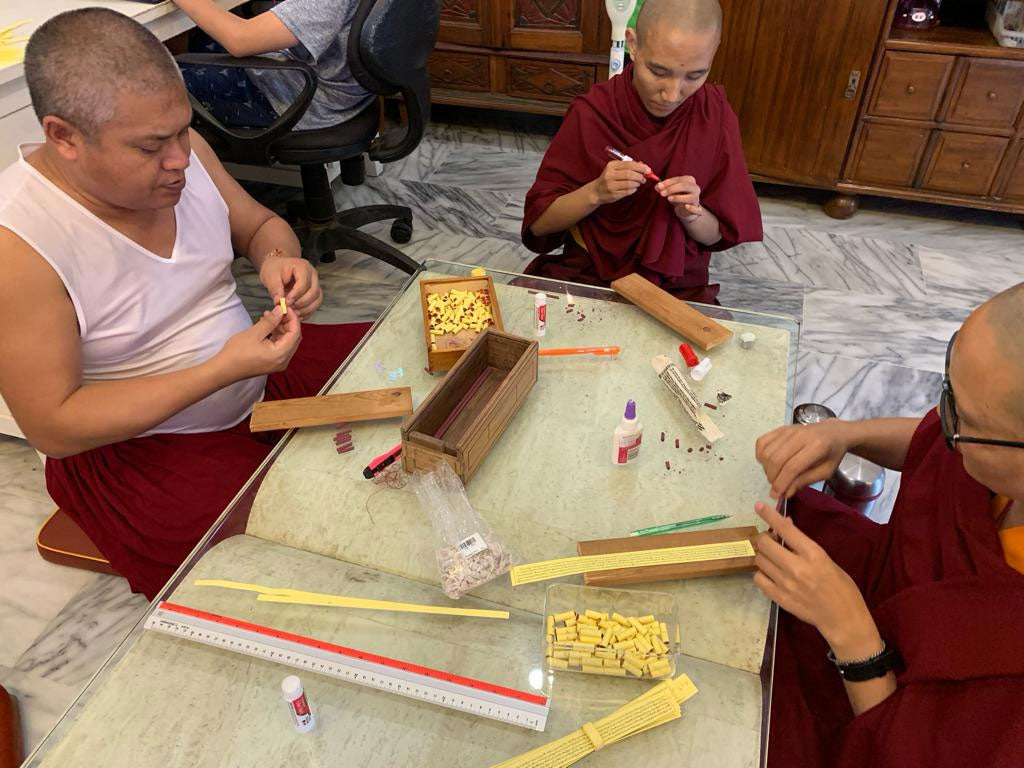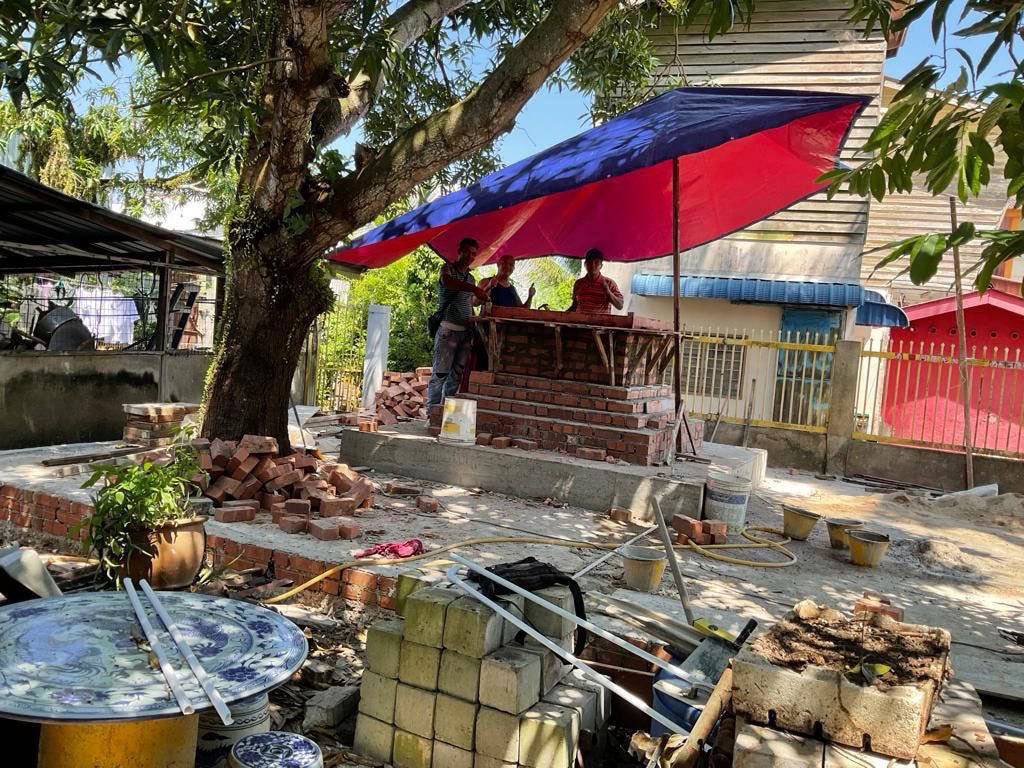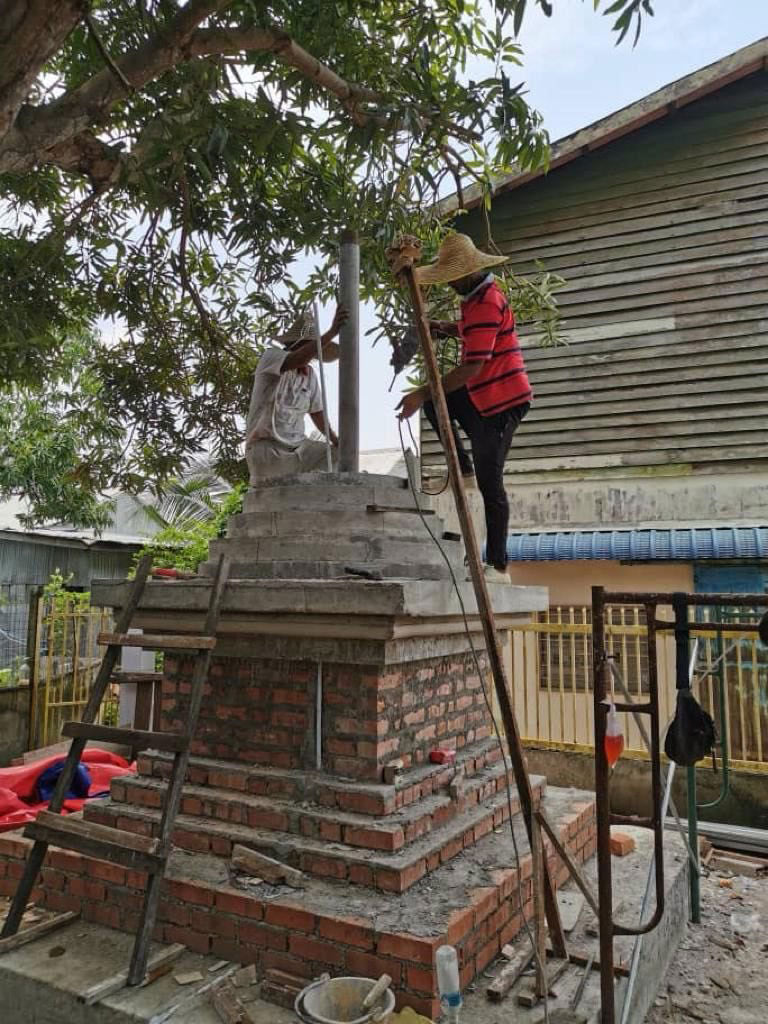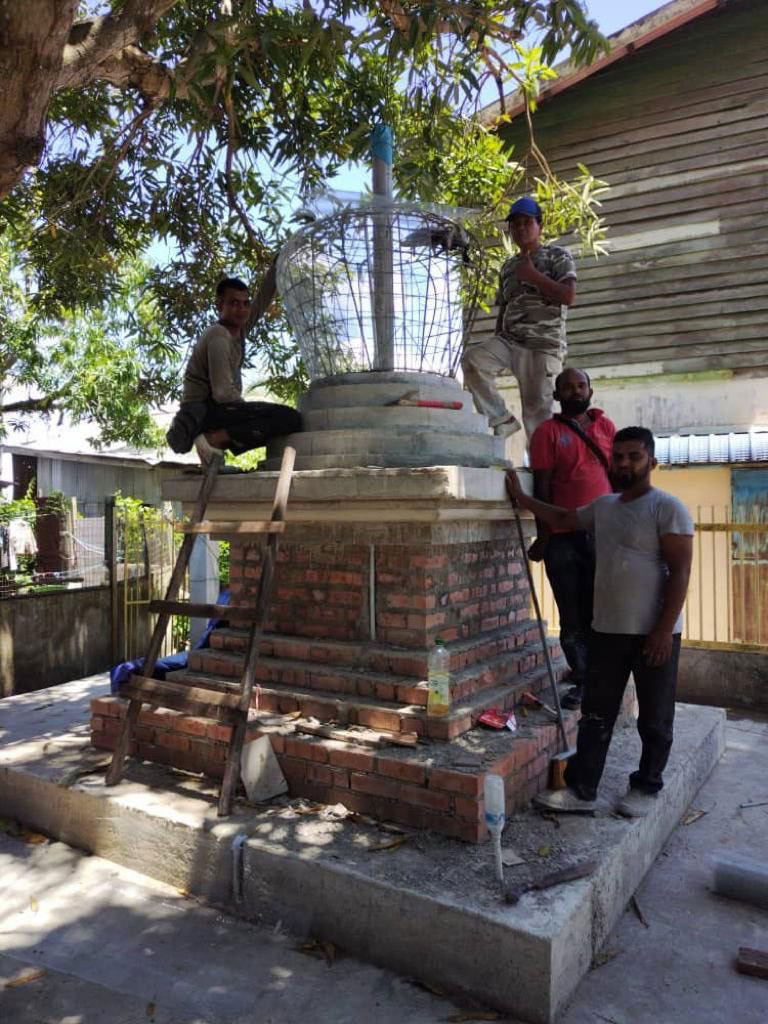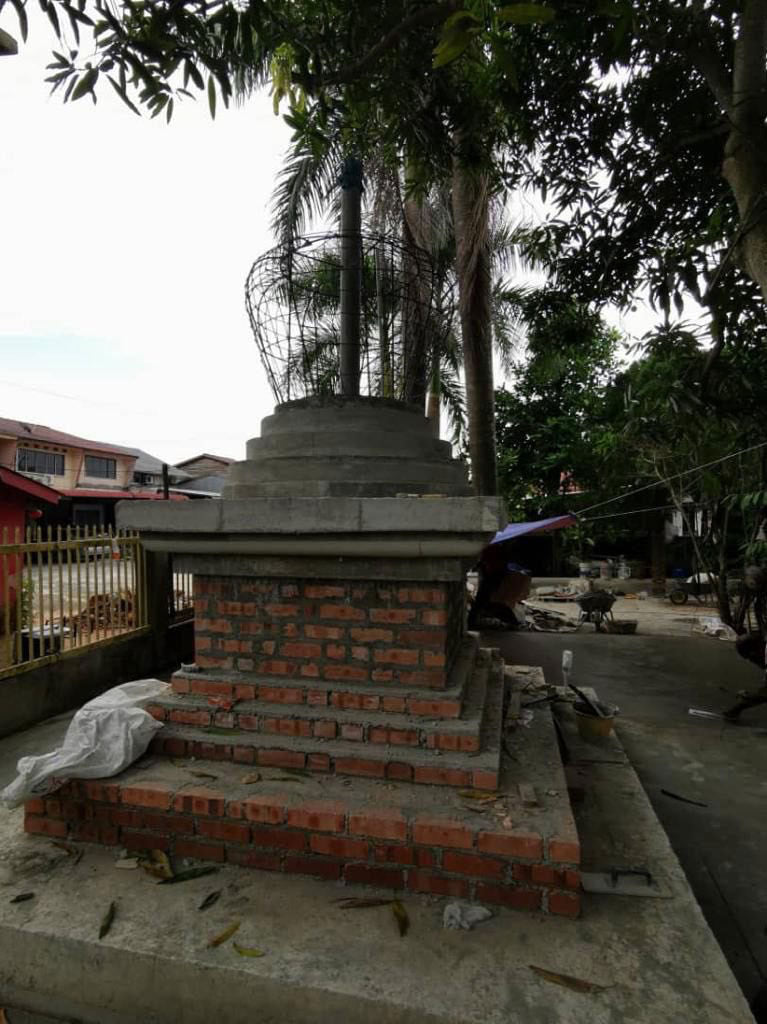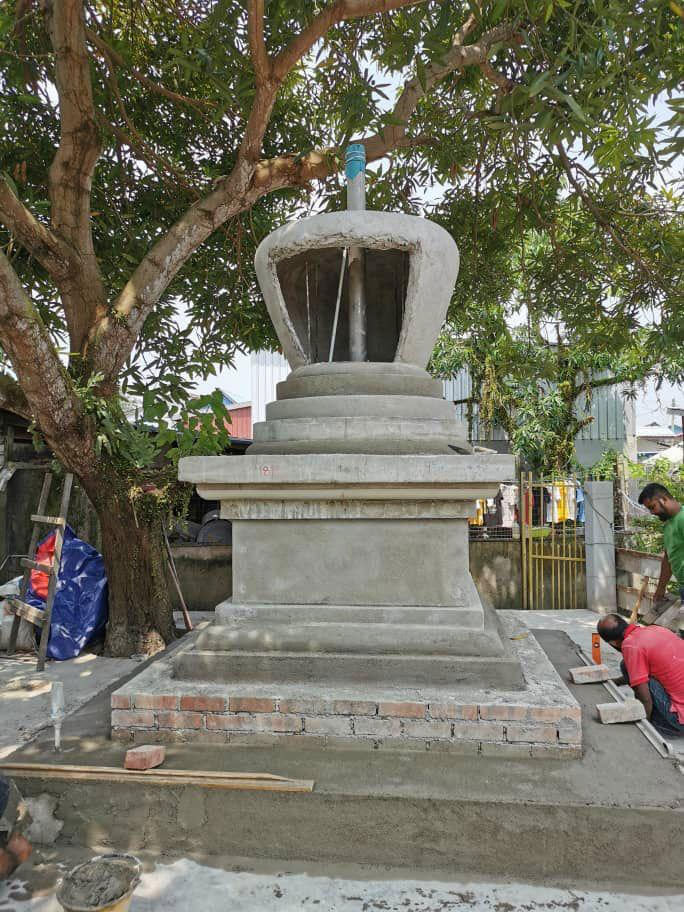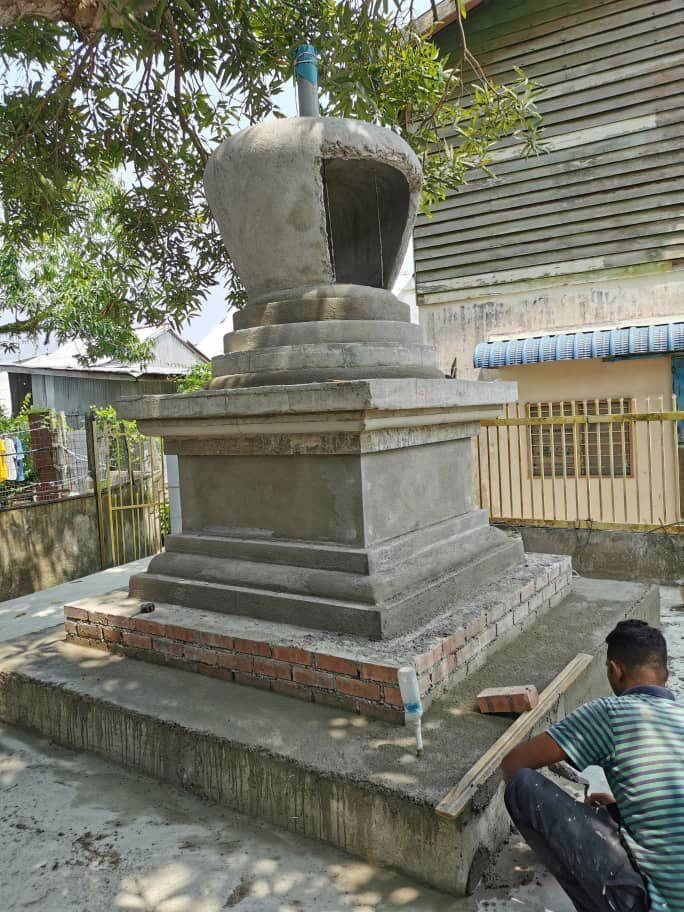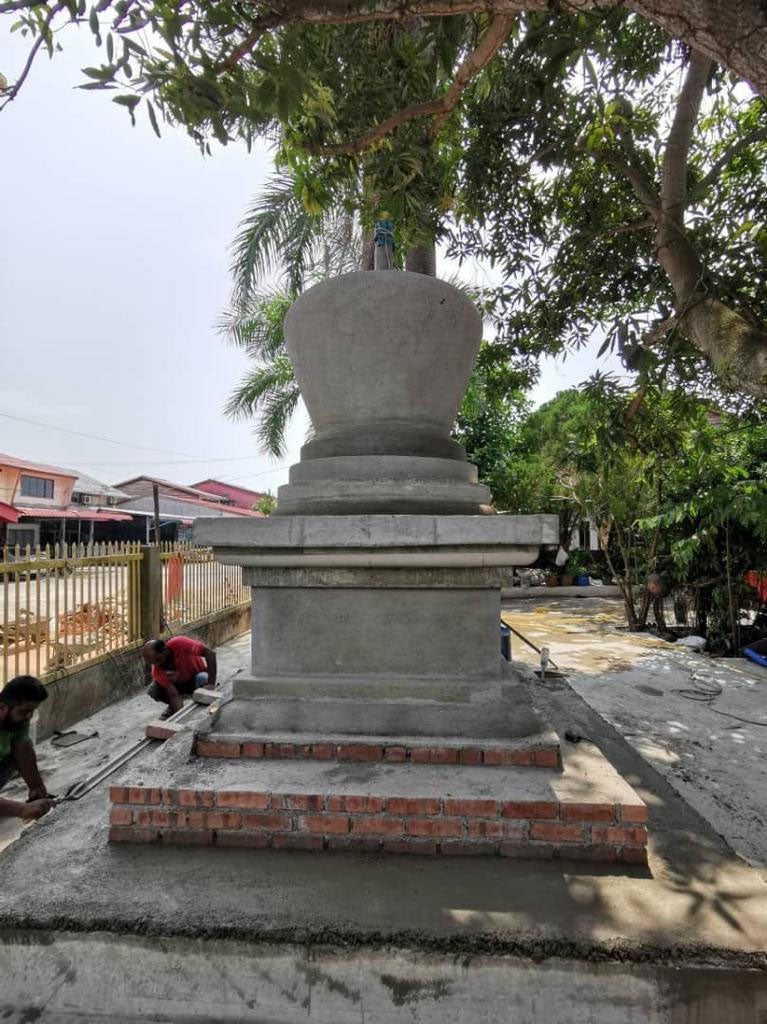Tashi Gephelling Buddhist Centre
Construction of Namgyalma Stupa 建造南迦玛舍利塔
Construction of Namgyalma Stupa 建造南迦玛舍利塔
Couldn't load pickup availability
The stupa (“stupa” is Sanskrit for heap) is an important form of Buddhist architecture, though it predates Buddhism. It is generally considered to be a sepulchral monument. It is a place of burial or a receptacle for religious objects. At its simplest, a stupa is a dirt burial mound faced with stone.
In Buddhism, the earliest stupas contained portions of the Buddha’s ashes, and as a result, the stupa began to be associated with the body of the Buddha. Adding the Buddha’s ashes to the mound of dirt activated it with the energy of the Buddha himself.
Before Buddhism, great teachers were buried in mounds. Some were cremated, but sometimes they were buried in a seated, meditative position. The mound of earth covered them up. Thus, the domed shape of the stupa came to represent a person seated in meditation much as the Buddha was when he achieved Enlightenment and knowledge of the Four Noble Truths. The base of the stupa represents his crossed legs as he sat in a meditative pose (called padmasana or the lotus position). The middle portion is the Buddha’s body and the top of the mound, where a pole rises from the apex surrounded by a small fence, represents his head. Before images of the human Buddha were created, reliefs often depicted practitioners demonstrating devotion to a stupa.
The ashes of the Buddha were buried in stupas built at locations associated with important events in the Buddha’s life including Lumbini (where he was born), Bodh Gaya (where he achieved Enlightenment), Deer Park at Sarnath (where he preached his first sermon sharing the Four Noble Truths (also called the dharma or the law), and Kushingara (where he died). The choice of these sites and others were based on both real and legendary events.
Share
